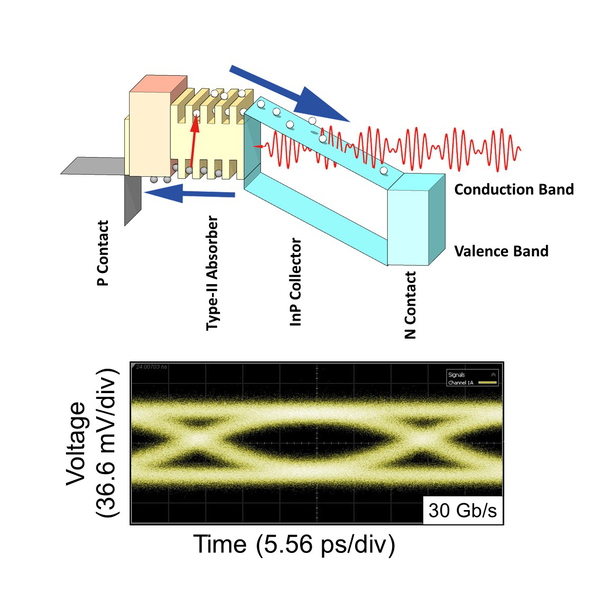SIST Assistant Professor Chen Baile’s group demonstrated high-speed photodetector at 2-micron waveband. This photodetector, operating at 2-micron wavelength band, has a high 3dB bandwidth up to 25 GHz, and achieves a clear eye pattern at 30 Gb/s. It is reportedly the fastest photodetector operating at 2-micron. Their achievement was recently published in Optica in an article entitled “High-speed uni-traveling carrier photodiode for 2 μm wavelength application.”
With the rapid development of information, the single fiber capacity of the existing 1550nm optical communication system has gradually approached its theoretical limit. The optical communication system at 2-micron wavelength has become the major developing direction for the next-generation optical communication system. High speed photodetectors working at 2-micron wavelength band are an essential component of the 2-micron optical communication system. Chen Baile's group proposed and demonstrated the uni-traveling carrier photodetector with InGaAs/GaAsSb type-II multiple quantum wells absorption region based on InP substrate. This photodetector has very low dark current and high bandwidth. It overcomes the current issues of the existing detector technologies at 2-micron waveband, such as large dark current, difficult material growth and low bandwidth. This work provides a high-performance component for high speed optical communication systems in the 2-micron waveband.
The first author of this work is SIST PhD student Chen Yaojiang, and Dr. Chen Baile is the corresponding author. This research work was supported by Shanghai Sailing program and ShanghaiTech start-up funding.
Chen Yaojiang, Xie Zhiyang, Huang Jian, Deng Zhuo, and Chen Baile, High-speed uni-traveling carrier photodiode for 2 μm wavelength application, Optica 6, 884-889 (2019)
Read more at:https://doi.org/10.1364/OPTICA.6.000884

Figure Schematic of the photodetector (upper) and the eye pattern (lower).

